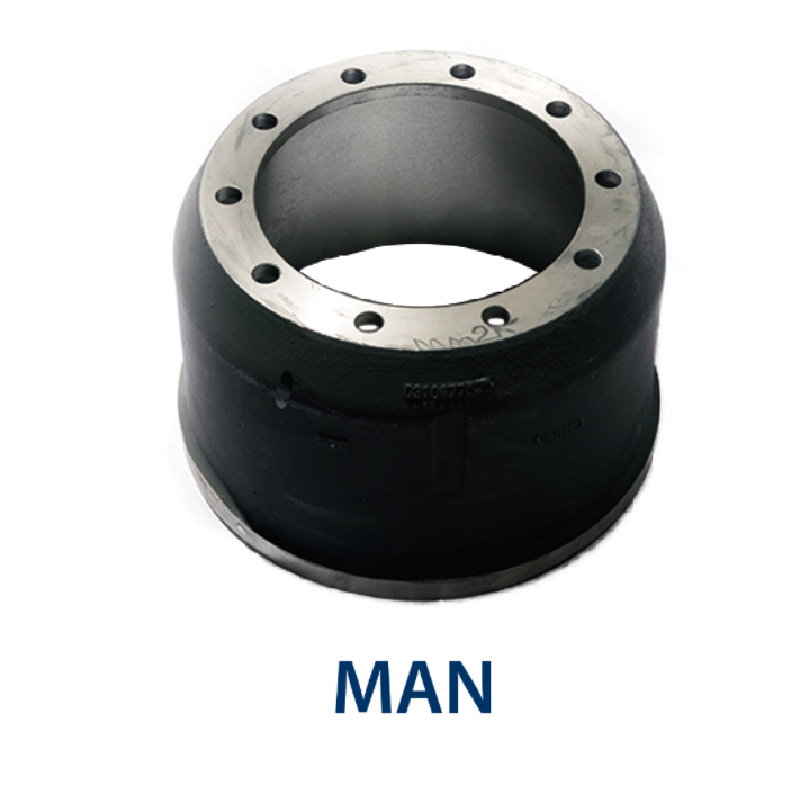Dec . 29, 2024 12:32 Back to list
Tips for Safely Extracting Stuck Brake Drums from Your Vehicle
How to Remove a Stuck Brake Drum
Removing a stuck brake drum can be a daunting task, especially for those who are not highly experienced with automotive repairs. However, with a bit of patience, the right tools, and a systematic approach, you can successfully tackle this task. Here’s a detailed guide to help you through the process of removing a stuck brake drum.
Understanding the Problem
Brake drums can get stuck for several reasons. Over time, rust, corrosion, or dirt accumulation can cause the brake shoes to adhere to the drum. Additionally, if the parking brake is engaged for an extended period without movement, the shoes can bind to the drum. In such cases, simply pulling on the drum won’t suffice; you will need to apply some techniques to loosen it.
Tools Required
Before starting the process, gather the following tools
1. Jack and jack stands 2. Lug wrench 3. Brake cleaner 4. Screwdriver (flathead) 5. Hammer or mallet 6. Pliers 7. Wrench set 8. Rubber mallet (optional) 9. Safety goggles and gloves
Step-by-Step Guide
1. Safety First
Always prioritize safety. Ensure you're working in a well-ventilated area and wear safety goggles to protect your eyes from dust and debris.
2. Lift the Vehicle
Begin by loosening the lug nuts on the wheel where the brake drum is located, just enough so they can be removed by hand. Once loosened, use a jack to lift the vehicle off the ground. Ensure you use jack stands for stability and safety before getting under the vehicle.
3. Remove the Wheel
After securing the vehicle, fully remove the lug nuts and take off the wheel. Place it aside in a safe location.
4. Inspect the Brake Drum
Once the wheel is removed, inspect the brake drum. If there are any signs of rust or corrosion, this may be the reason it is stuck. You might also want to check that the parking brake is fully released before proceeding.
how to remove stuck brake drum

5. Apply Brake Cleaner
Spray brake cleaner around the edge of the drum where it connects to the backing plate. This will help remove any debris or rust that might be causing it to stick.
6. Use a Flathead Screwdriver
Insert a flathead screwdriver between the drum and the backing plate. Gently pry around the circumference of the drum to break any rust seal or dirt bond that may be holding it in place. Be careful not to damage the drum or the backing plate.
7. Tap it Loose
If the drum doesn’t budge, use a hammer or mallet to tap gently around the edge of the drum. Start at one point and move around, striking every few inches. This can help dislodge any rust that’s holding it tight.
8. Check for Retaining Screws
Some brake drums are held in place by retaining screws. If your drum has them, locate and remove these screws using your wrench or screwdriver before attempting to pull the drum off.
9. Pull the Drum Off
Once you’ve loosened the drum through cleaning, prying, and tapping, try to pull it off the wheel hub. You may need to wiggle it back and forth gently while pulling to help it slide off.
Final Steps
If the drum finally releases, inspect it for any damage before reassembling. Make sure all components are clean before returning the drum to its place or replacing it with a new one.
If after trying all these steps the drum remains stuck, it may be worth consulting a professional mechanic who has more specialized tools and experience.
Conclusion
Removing a stuck brake drum may require some effort, but by following these steps, you can achieve success without damaging your vehicle. Regular maintenance of your braking system, including periodic inspection and cleaning, can help prevent the issue of stuck brake drums in the future. Always remember, safety comes first when working on vehicles. Happy repairing!
-
Genuine Nissan Brake Drums | OEM Fit & Performance
NewsAug.09,2025
-
Seamless International Solutions for Global Business & Travel
NewsAug.08,2025
-
Premium Volvo Brake Drums: Truck, Semi & VNL Performance Parts
NewsAug.07,2025
-
BPW Axles & Suspensions | Quality Running Gear for Trailers
NewsAug.06,2025
-
Premium Iveco Brake Drum - Durable & Reliable Performance
NewsAug.05,2025
-
High-Performance Nissan Brake Drum | Durable Braking
NewsAug.03,2025
